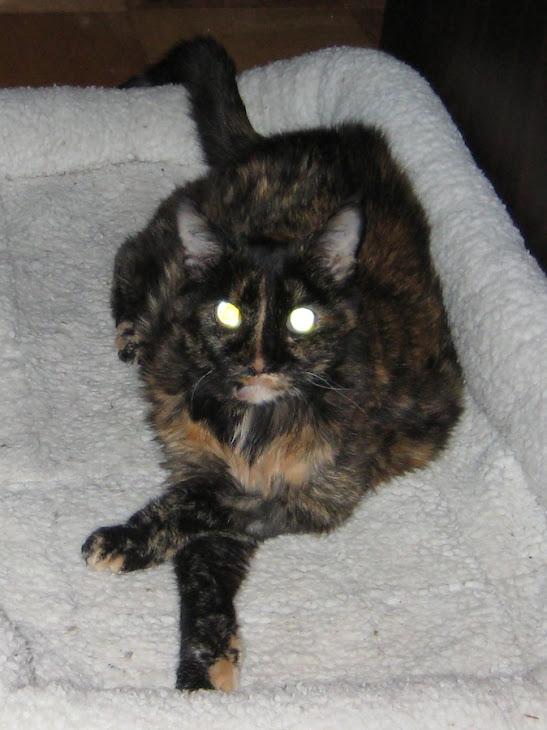
Breast Cancer -- in Cats?
In addition to conjuring thoughts of Halloween, October has been deemed Breast Cancer Awareness Month for many years now. Why mention this on a blog about cats? Because people also belong to cats, and people sometimes need reminders!Cats aren't immune to breast cancer, either, although it's referred to as "mammary cancer" in pets. Little advancement in the treatment of feline mammary cancer has been made over the past 20 years. Early detection and treatment greatly improves outcomes, however.
What Cats Are at Risk?
One in 4,000 cats will likely develop mammary cancer. For some unknown reason, Siamese cats are twice as likely as other breeds to develop it. Older cats are at higher risk, with onset at ages 10-12 being average (slightly earlier for Siamese). But it's been found in cats anywhere from 9 months to 23 years in age. Rarely is it seen in male cats. It is more common in unspayed females, so there's yet another reason to get your cat spayed, if you haven't already. Spaying the cat before her first heat cycle further reduces her likelihood of developing mammary cancer.Mammary tumors are the third most common types of tumors found in cats. They account for 10-12% of all tumors found in our feline friends. 80-85% of them are what's known as malignant adenocarcinomas. These very aggressive tumors often spread into the surrounding lymph nodes, lungs, pleura, liver, diaphragm, adrenal glands, or kidneys. They are generally treated with surgery to remove all the mammary glands on that side, since more than half of the tumors involve multiple glands (cats have 8 of them, 4 on each side). This is known as a "radical chain mastectomy". Often, chemotherapy is used in conjunction with the surgery, but up to 65% of the tumors return within a year of removal. Most cats survive less than a year after diagnosis. The smaller the tumor when treated, the better your cat's chance of surviving longer.
Finding and Preventing Feline Mammary Cancer
How would you know if your cat has mammary cancer? After all, cats are very good at masking the symptoms of illness, so you have to be diligent. Delay in treatment means higher likelihood of a fatal tumor. Fortunately, you can turn a cuddling session into a check for cancer symptoms! Lie your cat on her side or back in your lap. Check for lumps, just like we ladies are supposed to do. They may feel like a pebble, a BB, or a dried pea. Look also for any abnormally swollen place. A sore or ulcer that won't heal is another sign to look for, especially if it smells bad or bleeds. As always, weight loss or changes in appetite are indicative that something's wrong, as is a discharge or bleeding from the nipples or red, swollen nipples. Any of these things should prompt an immediate visit to the vet. If cancer is suspected, referral to a veterinary oncologist is highly recommended.As mentioned before, early spaying before first heat is the single most effective precaution against mammary cancer in your cat. Annual veterinary checkups are also important. If your cat has miliary dermatitis (also called "feline eczema", "scabby cat disease" or "blotch"), avoid treatments that involve progesterone-like drugs. These types of drugs are rarely used any more, but in the past were occasionally prescribed for miliary dermatitis or even for behavioral problems such as urine spraying. Always be aware of what's being prescribed for your cat; ask questions of your vet if you're uncertain.
To see pink products we're featuring for Breast Cancer Awareness month, along with some really cute Halloween items, visit OldMaidCatLady.com today!








No comments:
Post a Comment